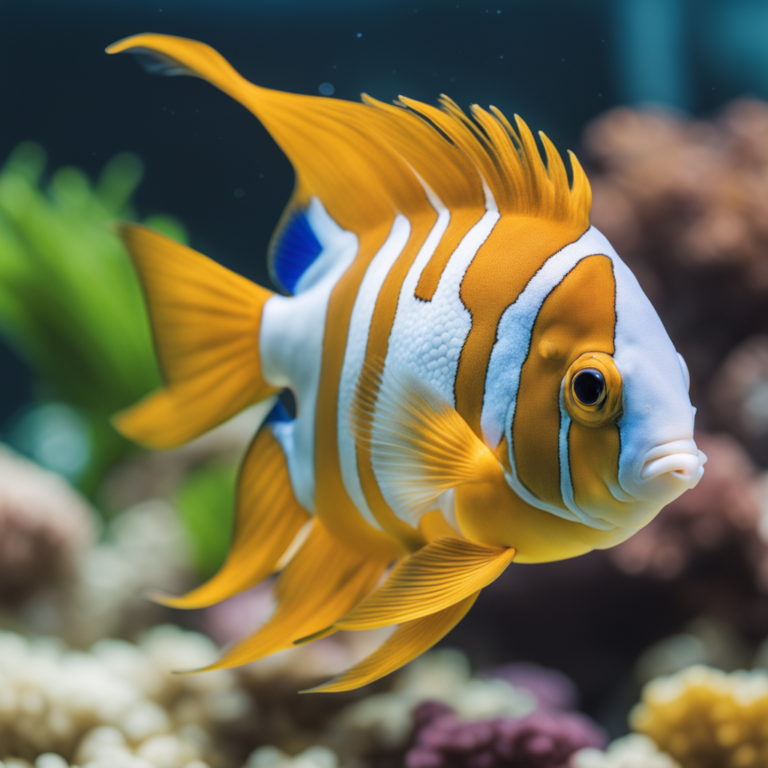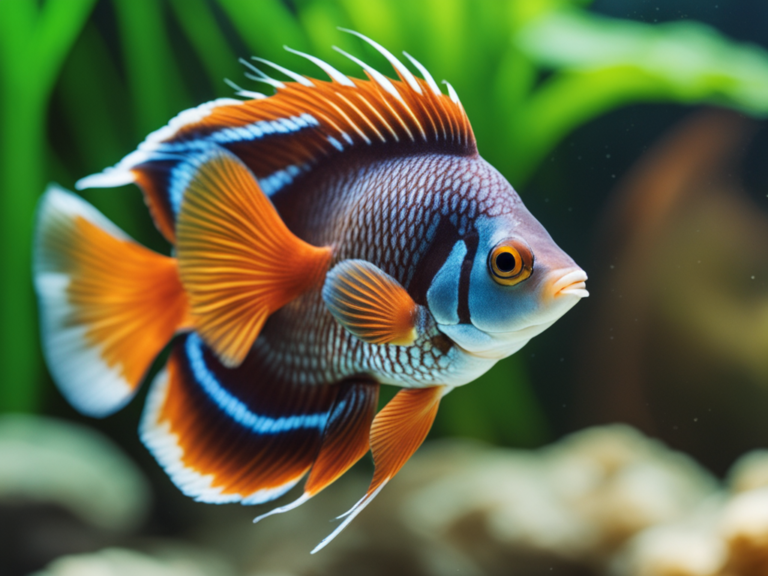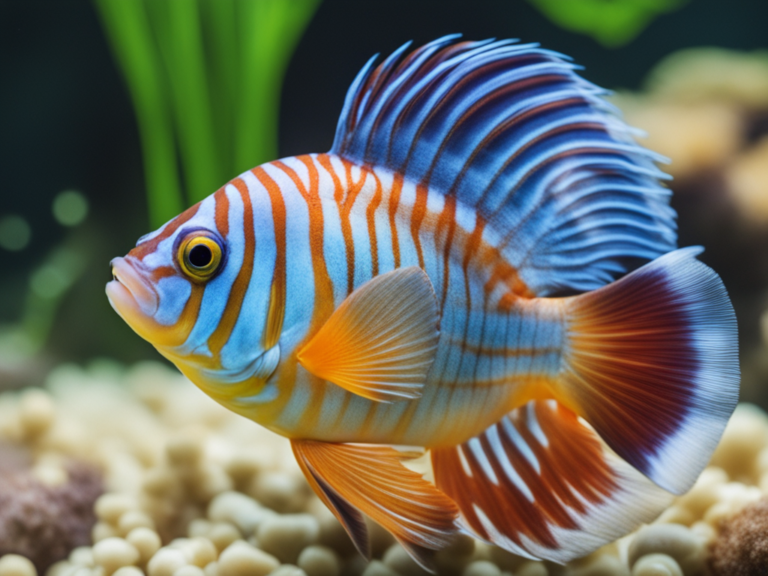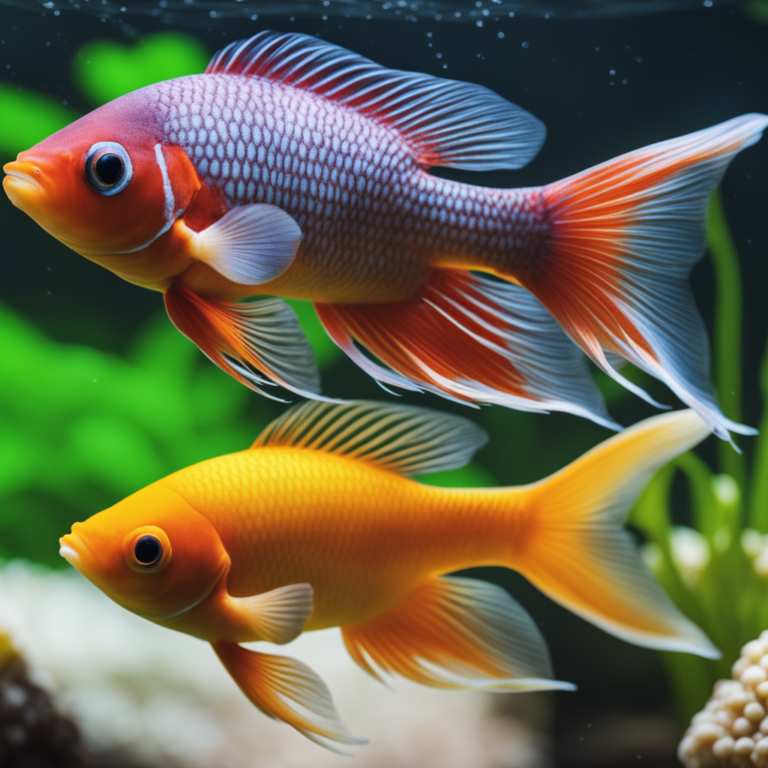Best Fish Breeds That Require Little Feeding

Fish Breeds That Require Little Feeding: Looking for low-maintenance fish breeds that won’t break the bank on food? Look no further! In this guide, you will discover several fish breeds that require little feeding. From guppies to betta fish, these aquatic creatures are self-sufficient and can survive on minimal food. White Cloud Mountain Minnows, cherry barbs, zebra danios, and corydoras catfish are just a few examples of hardy fish that thrive on small amounts of food. Whether you’re a busy individual or simply looking to save some money, these fish breeds are perfect for you. So, let’s dive in and learn more about these low-feeding fish breeds that will bring joy to your aquarium without the hassle of constant feeding.
Guppies: Low-Maintenance and Self-Sufficient
When it comes to low-maintenance and self-sufficient fish breeds, guppies are a great option for you. Guppies, scientifically known as Poecilia reticulata, are small freshwater fish native to South America. They are popular among beginner fish keepers due to their vibrant colors, ease of care, and ability to breed readily. In this section, we will discuss some breeding tips and guppy tank setup to help you create a successful and thriving guppy tank.
Breeding guppies is relatively easy, and it can be an exciting experience for aquarists. To encourage breeding, it is recommended to keep a ratio of one male guppy to two or three females. This will help reduce stress on the females caused by excessive mating attempts from the males. Additionally, providing plenty of hiding spots, such as plants or caves, will give the females a place to retreat and give birth to their fry.
Creating an ideal guppy tank setup is crucial for their well-being and breeding success. Guppies prefer a well-maintained aquarium with clean water and stable water parameters. The temperature should be maintained between 75-82°F (24-28°C), and the pH level should be around 7.0-8.0. It is also important to provide a variety of plants, both floating and rooted, as they offer hiding places and serve as a source of food for the fry.
Betta Fish: Survive on Minimal Food
If you’re looking for a fish breed that can survive on minimal food, betta fish are an excellent choice. Also known as Siamese fighting fish, bettas are small freshwater fish native to Southeast Asia. These beautiful and vibrant fish have unique behaviors and specific tank setup requirements that contribute to their ability to thrive on minimal feeding.
Betta fish are known for their labyrinth organ, which allows them to breathe air from the surface. This adaptation enables them to survive in oxygen-deprived environments, such as stagnant water bodies. It also means that bettas can go for extended periods without eating, as they can extract oxygen directly from the air. However, it’s important to note that while bettas can survive with minimal feeding, it is still crucial to provide them with a nutritionally balanced diet to ensure their overall health and well-being.
When it comes to tank setup, bettas require a specific environment to thrive. They prefer warm water temperatures between 78 to 80 degrees Fahrenheit and need a tank with a capacity of at least 2.5 gallons. Providing them with plenty of hiding spots, such as plants and caves, mimics their natural habitat and helps reduce stress. Bettas are solitary fish and should be housed alone to prevent aggression.
Despite their hardiness, betta fish are still susceptible to common health issues. Some of the most prevalent problems include fin rot, ich, and constipation. To prevent these issues, it is essential to maintain clean water conditions, provide a varied diet, and monitor any changes in behavior or appearance. Regular water changes, proper filtration, and a balanced diet consisting of high-quality betta pellets, freeze-dried or frozen foods, and occasional live foods will go a long way in keeping your betta fish healthy and thriving.
White Cloud Mountain Minnows: Thrive on Small Amounts of Food
To keep White Cloud Mountain Minnows thriving on minimal food, provide them with a balanced diet and a suitable tank environment. White Cloud Mountain Minnows, known scientifically as Tanichthys albonubes, are a small freshwater fish native to the White Cloud Mountain area in China. They are known for their hardiness and adaptability, making them an excellent choice for beginner fishkeepers. When it comes to feeding, these minnows are not picky eaters and can thrive on small amounts of food.
White Cloud Mountain Minnows have omnivorous feeding habits, meaning they will eat both plant matter and small insects or crustaceans. To provide them with a balanced diet, you should include a variety of foods in their feeding routine. High-quality flake or pellet food formulated for tropical fish can serve as their staple diet. Additionally, you can supplement their diet with live or frozen foods such as daphnia, brine shrimp, or bloodworms. These foods will provide them with essential nutrients and help stimulate their natural feeding behaviors.
In addition to a proper diet, creating a suitable tank environment is crucial for the well-being of White Cloud Mountain Minnows. They thrive in slightly cooler water temperatures, ideally between 64°F and 72°F (18°C and 22°C). Maintaining stable water conditions is essential, so it is recommended to use a heater and thermometer to monitor and regulate the temperature. The pH level should be kept between 6.0 and 8.0, and the water hardness should be moderate, around 5 to 19 dGH.
Cherry Barbs: Hardy Fish With Low Feeding Requirements
With Cherry Barbs, you can easily meet their low feeding requirements by providing them with a balanced diet and a suitable tank environment. These hardy fish are a great addition to any aquarium, and they have specific needs when it comes to their breeding habits, tank mates, and optimal water conditions.
Here are some key points to consider when caring for Cherry Barbs:
- Breeding Habits and Tank Mates:
- Cherry Barbs are relatively easy to breed, making them a popular choice for hobbyists. To encourage breeding, provide them with plenty of hiding spots and plants in the tank.
- They are peaceful fish and can be kept with other non-aggressive species such as tetras, rasboras, and small peaceful catfish.
- Avoid keeping them with aggressive or fin-nipping fish, as this can cause stress and harm to the Cherry Barbs.
- Optimal Water Conditions for Cherry Barbs:
- Cherry Barbs prefer slightly acidic to neutral water with a pH range of 6.0 to 7.5.
- The water temperature should be maintained between 72°F and 79°F (22°C and 26°C) for optimal health and breeding.
- It is important to provide a well-filtered tank with regular water changes to maintain good water quality for the Cherry Barbs.
Zebra Danios: Active Swimmers With Low Appetites
When caring for Zebra Danios, you can easily meet their low feeding requirements by providing a balanced diet and maintaining a suitable tank environment. Zebra Danios are active swimmers that have relatively low appetites compared to other fish breeds. In the wild, they feed on small insects, zooplankton, and algae. To replicate their natural diet, you can offer them a mix of high-quality flake food, freeze-dried or frozen brine shrimp, and small live or frozen foods like daphnia or bloodworms.
Zebra Danios are relatively easy to care for and can adapt to a wide range of water conditions. However, to ensure their well-being and encourage breeding, it is important to maintain ideal water conditions and temperature. Zebra Danios thrive in water temperatures between 64°F and 75°F (18°C to 24°C). The pH level should be between 6.5 and 7.5, and the water hardness should be around 5 to 12 dGH. It is recommended to use a filtration system to keep the water clean and provide good oxygenation.
When it comes to breeding habits, Zebra Danios are known for their prolific nature. They are egg scatterers, meaning they lay their eggs on plants or other surfaces in the tank. To encourage breeding, provide them with suitable tank mates such as other Zebra Danios or small, peaceful fish. The presence of plants and hiding spots in the tank will also create a conducive environment for breeding.
Corydoras Catfish: Bottom-Dwellers That Require Infrequent Feeding
If you own Corydoras Catfish, you will find that they require infrequent feeding due to their nature as bottom-dwellers. These unique fish have specific feeding habits and dietary preferences that contribute to their low appetite. Here are three key points to understand about Corydoras Catfish and their feeding requirements:
- Bottom-dwelling behavior: Corydoras Catfish are known for their preference to stay close to the substrate of the aquarium. They spend most of their time scavenging for food particles that have settled at the bottom. Their natural habitat consists of rivers and streams with sandy or muddy bottoms, where they use their barbels to search for food. This behavior allows them to find sustenance without consuming large quantities of food regularly.
- Omnivorous diet: Corydoras Catfish have an omnivorous diet, meaning they consume both plant and animal matter. In the wild, they feed on various small organisms, such as insect larvae, crustaceans, and detritus. In captivity, they can be fed a balanced diet of high-quality sinking pellets or tablets, supplemented with occasional live or frozen foods like bloodworms or brine shrimp. Providing a diverse diet ensures that they receive all the necessary nutrients.
- Slow metabolism: Another reason Corydoras Catfish require infrequent feeding is their relatively slow metabolism. Their bodies are adapted to extract nutrients efficiently from small amounts of food. Feeding them excessive amounts can lead to digestive issues and water pollution. It is recommended to feed them small portions once or twice a day, taking into account their size and the number of fish in the aquarium.
Understanding the unique feeding habits and dietary preferences of Corydoras Catfish is crucial for their overall health and well-being. By providing them with the right amount and type of food, you can ensure they thrive in your aquarium environment.
Frequently Asked Questions
What Are Some Other Low-Maintenance Fish Breeds Besides the Ones Mentioned in the Article?
Other low maintenance fish breeds not mentioned in the article include guppies, platies, and swordtails. These breeds require minimal feeding and are easy to care for. However, they may not have the same vibrant colors or unique features as other breeds.
Can These Fish Breeds Survive Without Any Feeding at All?
Fish cannot survive without feeding as they require nutrients to maintain their health and energy levels. However, there are certain fish breeds that require little feeding, which can be beneficial in terms of reducing maintenance and costs.
How Often Should I Feed These Fish Breeds to Ensure Their Health and Well-Being?
To ensure the health and well-being of low maintenance fish breeds, feed them regularly. It is important to monitor their behavior and appearance for signs of malnutrition, such as weight loss or dull scales.
What Are Some Common Mistakes to Avoid When Feeding These Fish Breeds?
When feeding low maintenance fish breeds, avoid common mistakes like overfeeding and using improper food. These errors can lead to health problems and water quality issues. Be precise and informed in your feeding routine.
Are There Any Specific Types of Food That Are Recommended for These Fish Breeds to Ensure Their Optimal Health?
To ensure optimal health for these fish breeds that require little feeding, it is recommended to use different types of fish food. Consider the pros and cons of each option to make an informed decision.
Fish Breeds That Require Little Feeding Conclusion
In conclusion, several fish breeds require little feeding and can thrive on minimal food. Guppies, Betta Fish, White Cloud Mountain Minnows, Cherry Barbs, Zebra Danios, and Corydoras Catfish are all low-maintenance options for fish enthusiasts. These breeds have adapted to survive on small amounts of food, making them ideal for individuals who prefer a more hands-off approach to fish care. By choosing these fish breeds, you can enjoy the beauty of aquatic life without the need for frequent feeding.








